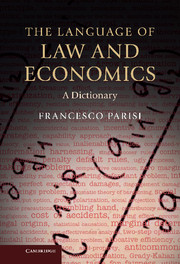X
Published online by Cambridge University Press: 04 August 2017
Summary
X-inefficiencies: the concept of X-inefficiency was introduced by Harvey Leibenstein (1978) as a measure of the distance between a firm’s actual production behavior and a perfectly competitive firm’s technically efficient choice. X-inefficiencies are sustainable only in imperfectly competitive markets, in which there is a lack of competitive pressure. In perfect competition, X-inefficiency may arise in the short run, but it will disappear in the long run under the effect of competition. Potential market entrants are willing to employ the most efficient production technology to realize a profit, and thereby increase competition, driving all firms to produce efficiently. However, under imperfect competition, X-inefficiency may persist, leading firms to adopt inefficient production techniques and realize positive profits. A monopolist producing below the efficient scale of production distorts production below the perfectly competitive level of output, and enables X-inefficiency to surface. Since it is limited to the estimation of production inefficiencies, the concept of X-inefficiency does not capture other factors that may lead to economic inefficiency, such as market failures. See also imperfect competition.
- Type
- Chapter
- Information
- The Language of Law and EconomicsA Dictionary, pp. 322Publisher: Cambridge University PressPrint publication year: 2013



